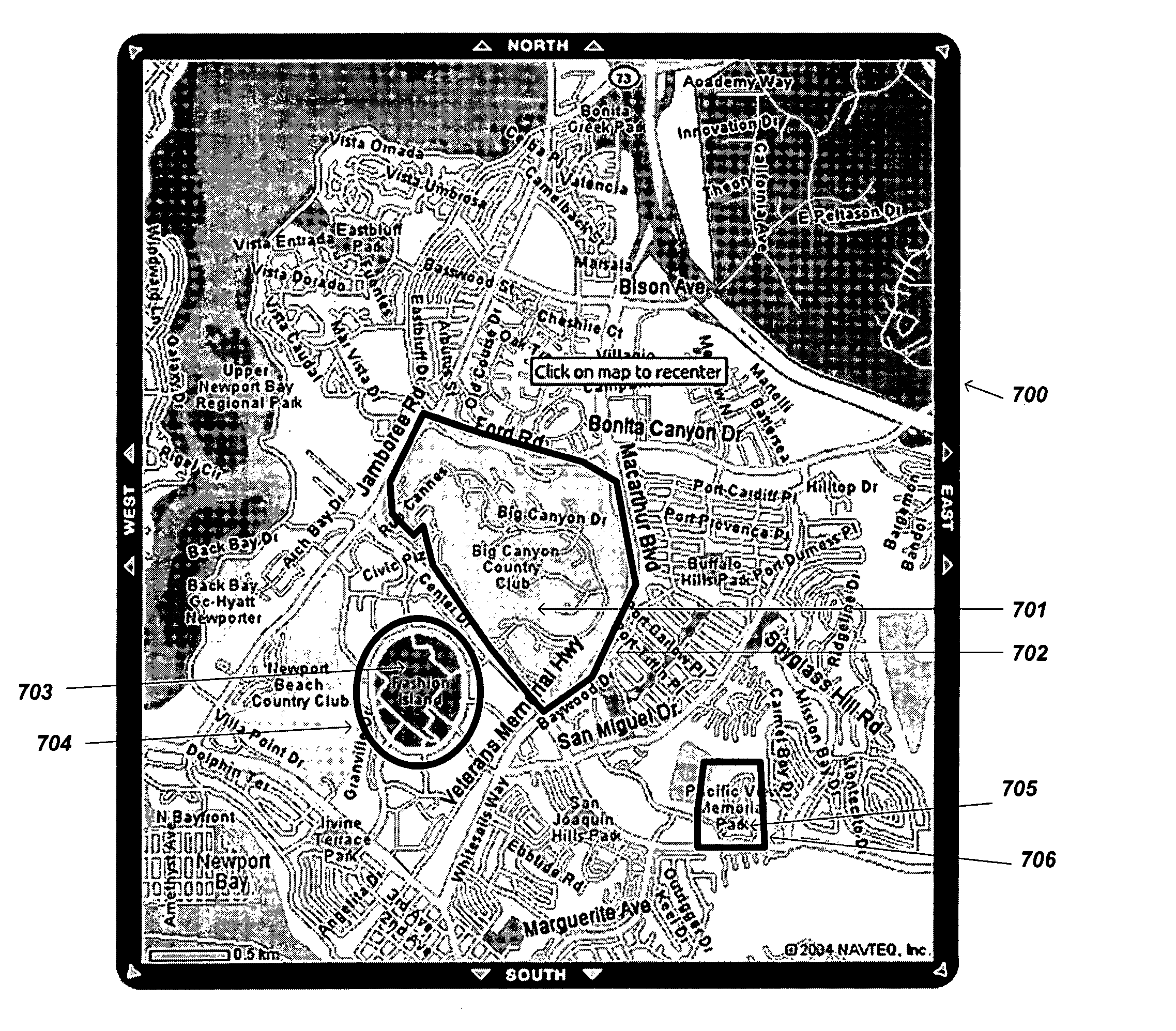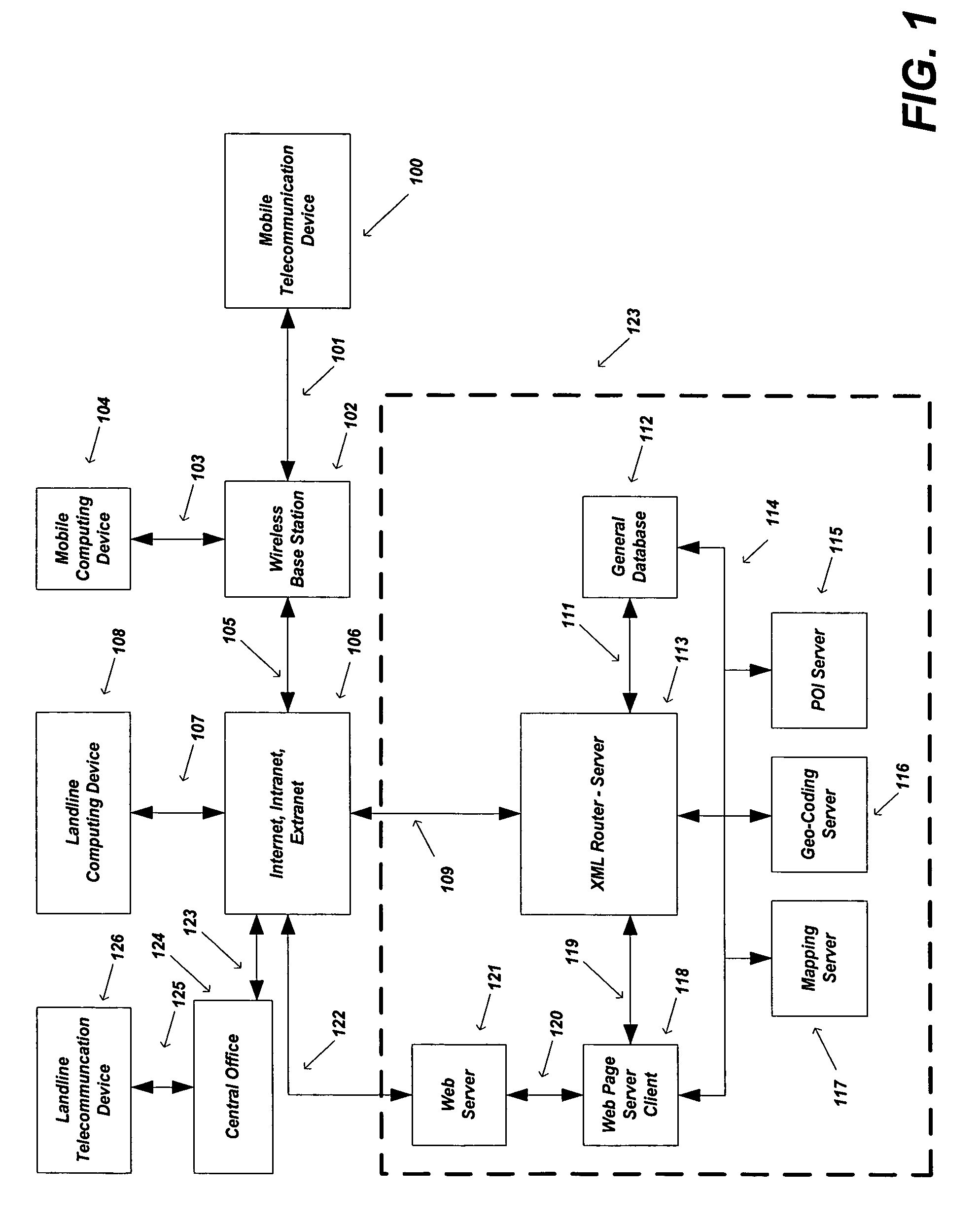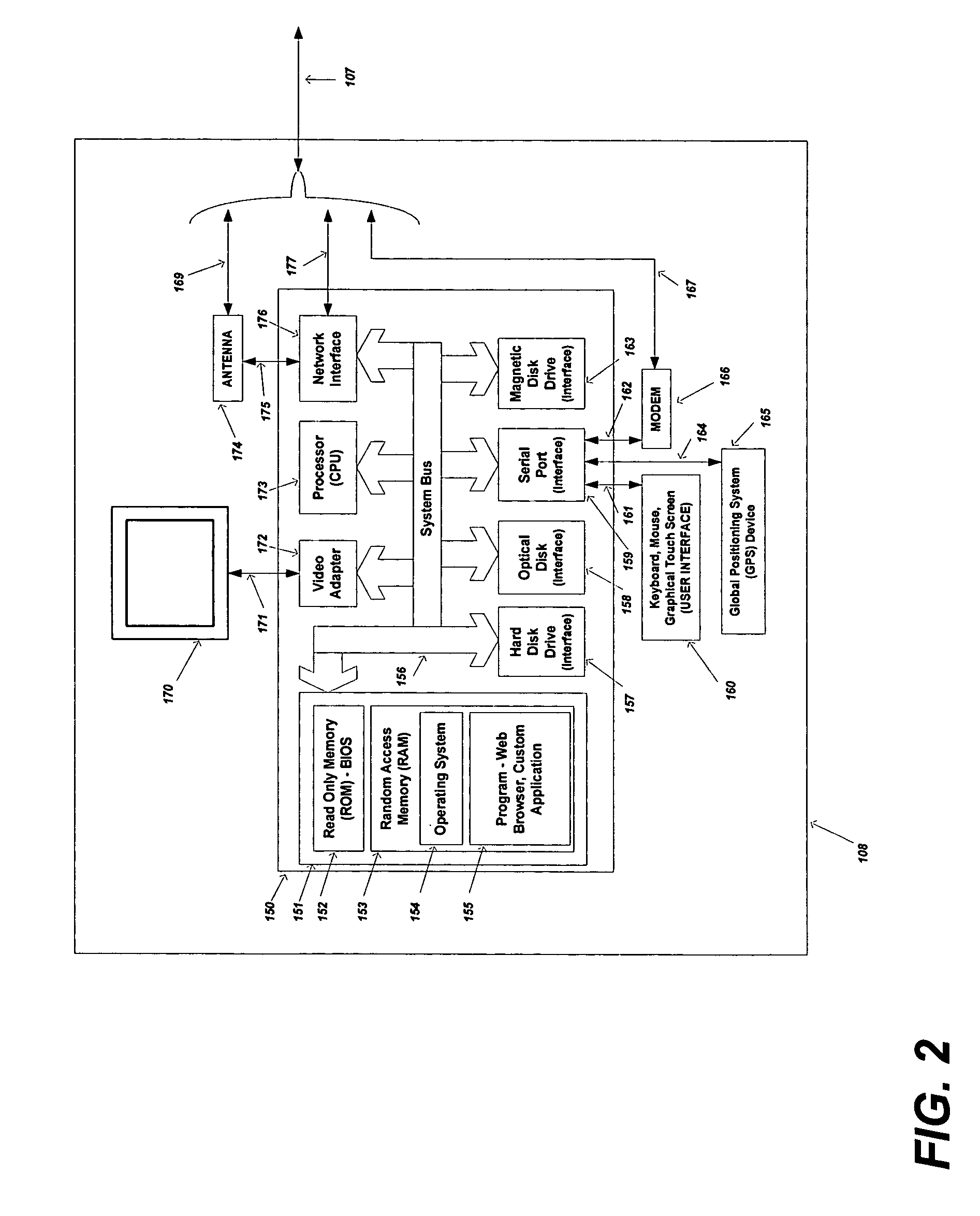Method and system for identifying and defining geofences
a geofence and method technology, applied in the field of methods and systems for identifying and defining geofences, can solve the problems of difficult to fully represent, difficult to create a geofence, difficult to add, etc., and achieve the effect of quick and easy addition of geofences to devices and easy creation of geofences
- Summary
- Abstract
- Description
- Claims
- Application Information
AI Technical Summary
Benefits of technology
Problems solved by technology
Method used
Image
Examples
Embodiment Construction
[0026]This present invention relates to a method and system for selecting, assigning, and creating Geofences based on using known map elements and / or point of interest (POI) data, such as parks, golf courses, schools, building, etc. using a plurality of user interface (UI) computing devices. Additionally, this invention combines the use of saving these Geofences on a Telecommunication Device (i.e., mobile device) that has location capability for the purpose of acting on said Geofences.
[0027]The present invention may be embodied in a pre-commercial (non-public) and internal application called “AtlasLink” which is owned and licensed by Networks In Motion, Inc. of Irvine, Calif.
[0028]FIG. 1 and FIG. 2 illustrate high-level diagrams of one embodiment that is a suitable computing and networking environment in which the invention may be implemented. The invention will be described in the general context of an application that executes on an operating system in conjunction with a personal ...
PUM
 Login to View More
Login to View More Abstract
Description
Claims
Application Information
 Login to View More
Login to View More - R&D
- Intellectual Property
- Life Sciences
- Materials
- Tech Scout
- Unparalleled Data Quality
- Higher Quality Content
- 60% Fewer Hallucinations
Browse by: Latest US Patents, China's latest patents, Technical Efficacy Thesaurus, Application Domain, Technology Topic, Popular Technical Reports.
© 2025 PatSnap. All rights reserved.Legal|Privacy policy|Modern Slavery Act Transparency Statement|Sitemap|About US| Contact US: help@patsnap.com



